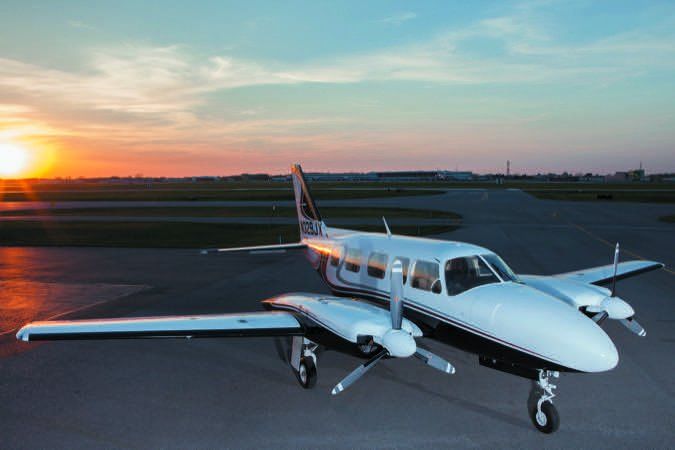Regarded as one of the workhorses of general aviation, the Piper Navajo has found a substantial market in the charter business. But it’s also an appealing twin for owners who want to fly themselves in relative comfort and luxury. Like the Cessna 402, as one example, you don’t find many Navajos in private ownership, although some aircraft sales professionals we spoke with during our research told us that’s changing—and good ones sell for a premium.
The Navajo model line is confusing. The PA-31 was produced in a half-dozen variants spanning two fuselage sizes over a 17-year production run beginning in 1967 and ending in 1984. All told, just over 1500 were built, the lion’s share of them the long-fuselage Chieftain version. Many of these have found their way to Europe and the Pacific, where they are valued as commuter airliners.
Piper had to earn its bones in this market, since it had no experience in large commercial aircraft working the airline service cycle. The experience paid off, however: It led directly to the development of more sophisticated airframes, such as the turbine-powered Cheyenne.
Owners of Navajos tell us they love the airplanes but, as with any twin, these airframes simply can’t be flown on the cheap. They require ongoing maintenance, the engine overhauls will consume much of $100,000 and the airframes virtually swim in ADs. That said, one owner sums up the Navajo’s appeal this way: “The Navajo is a fine aircraft, capable of performing many missions. It is comfortable and stable, straightforward to maintain and operate, reliable and cost effective. Our passengers don’t groan when boarding.”
Model History
When the first Navajo appeared in 1967, it debuted with the likes of the Cessna 401 and 411. The high-class 421 came out a year later. Although Cessna had big-twin experience, Piper didn’t, having been focused on airplanes like the Apache, Comanche and Tri-Pacer. Originally named the Inca, the PA-31 evolved from a relatively small twin into a large six-to-eight-place model, which was we’ll received.
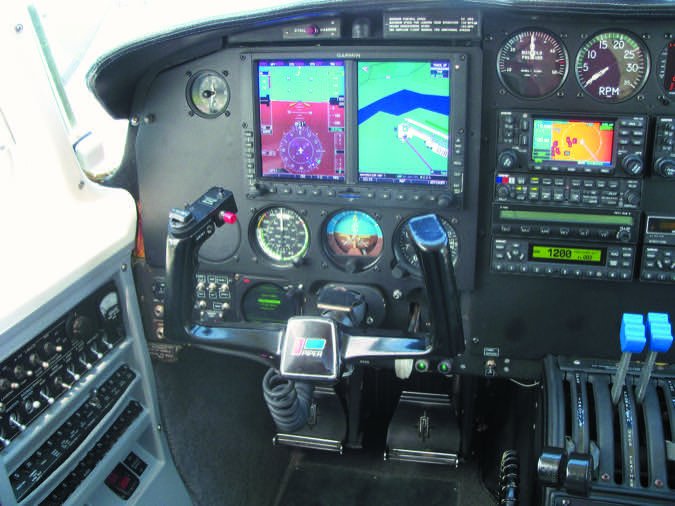
Initially, there were only two windows in each side of the fuselage aft of the cockpit, but this was increased to three rectangular windows with a smaller triangular one on the aft starboard side. The basic shape and arrangement held through the production life of the Navajo, yielding a cabin size almost large enough to stand up in.
The prototype flew in September 1964, powered by variants of the Lycoming O-540 family that remained the powerplant of choice throughout the Navajo production run. The first model year had both normally aspirated and turbocharged versions. The launch model was the PA-31-300, powered by 300-HP IO-540-Ms with two-bladed propellers and a recommended TBO of 2000 hours, a bit better than the Continental engines used in the Cessnas.
While the 300 has the same 190-gallon standard fuel capacity as all unpressurized Navajos, max takeoff weight is 6200 pounds, compared to 6500 for all the other so-called “short-body” Navajos, while basic empty weight was only 156 pounds less than the turbocharged version.
The 300’s production run was stunted: Only 14 were built over two years. The so-called “310” is really the standard Navajo. With turbocharged 310-HP engines, it could fly 30 knots faster, its single-engine ceiling was higher and it could take off shorter, plus, of course, the aforementioned extra useful load. This additional performance cost, on an average-equipped airplane, less than $10,000 on an invoice totaling about $130,000. It’s easy to see why the 300 was dropped.
While some initially were designated PA-31-310 and called the Turbo Navajo, the FAA issued an AD in 1973 requiring that any called that have the data plate changed to a PA-31 model designation. Despite early problems with the turbo system, this is the second most popular version of the Navajo. Improved B and C models were introduced in 1971 and 1975, respectively. Radar appeared during this period, along with deice systems, although not all airplanes have it and some that do aren’t certified for known ice.
As a nod to working pilots flying a working airplane, the pilot got his own overwing hatch so he wouldn’t have to clamber over the cargo and passengers to get to work. In later models, the door was enlarged.
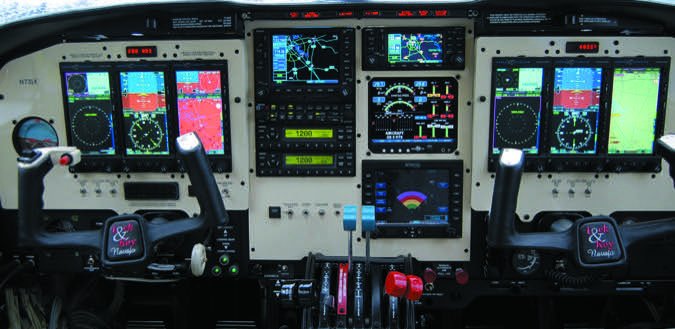
A number of refinements to systems were made along the line and not all are identified by changes to model designation. Field experience and maintenance issues were applied in a number of ways, such as improving the electrical system, including the location of circuit breakers and isolating wiring runs from sources of chafing and other deterioration. The cockpit was improved over the years, as was the appearance, comfort and serviceability of the cabin interior. When shopping Navajos, don’t be surprised to find wide variation in interior appointments.
A three-blade propeller was offered as an option with the B model and made standard with the C. While many pre-1979 Navajos are equipped with some or full deice equipment, approval for flight in known icing (described at the time as approval for flight in light to moderate icing) was not obtained until the 1979 model year. Recommended TBO increased from the initial 1500 hours to 1800 hours. Also, there are special conditions under which this now can be extended to 2000 hours. This requires trend monitoring and approval from the FAA, for for-hire operations.
P-Navajo
The PA-31P (aka the PA-31P-425, or P-Navajo) was introduced in 1970. It was the most sophisticated, highest-performing Piper ever, with a big but troublesome geared version of the 540 series engine, the TIGO-541-E1A. The pressurized Navajo was cured of early problems with the pressurization system, but powerplant reliability has continued to plague the ambitious design.
Initial recommended TBO of the 425-HP engine was an appalling 800 hours and even now, it’s only 1200 hours.
Plan on spending $50,000 each for the overhauls. A high-ticket, short-TBO engine is a major cost factor in any airplane so owners of this model should budget $100 an hour just for engine reserve. Combine this with the fuel burn (mid-20s per engine) and you have a high hourly operating cost. Big engines also mean short range. A standard-fuel P-Navajo has an endurance in the three-hour range with IFR reserves. There was an optional fuel system available, which boosted range to a bit over four.
Production of the P-Navajo ended in 1977; a total of 259 were built. Prices on the used market range from about $120,000 to maybe $180,000, reflecting the high maintenance load. To put this in perspective, a Turbo Navajo of comparable vintage is likely to be worth $20,000 to $40,000 more, despite having 115 HP less per engine and no pressurization.
Chieftain
The largest and most successful Navajo, the PA-31-350 Chieftain, was introduced in 1972 as a 1973 model. The fuselage was stretched two feet (ahead of the wing) and the tailplane span increased. The cargo door was made standard. The power comes from counter-rotating L/TSIO-540-J2BD, 350-HP engines.
The floor was beefed up and an additional window added to each side of the fuselage. Up to 10 seats could be fitted. Empty weight increased by roughly 200 pounds and maximum takeoff by 500 pounds.
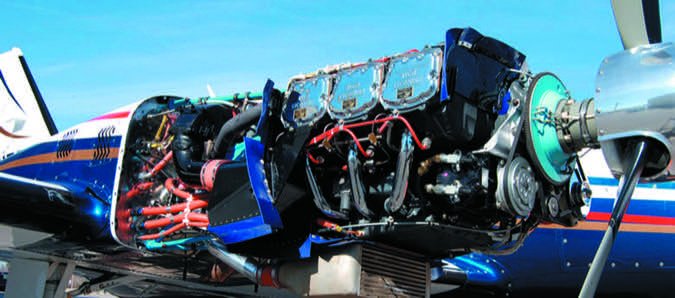
Extended nacelles provide baggage capacity and/or optional fuel tanks. The option raises total usable fuel from 182 to 236 gallons. The initial TBO of 1200 hours was increased to 1600 in 1979 and then 1800 (it, too, can be stretched to 2000 under special conditions). These engines cost about $50,000 each to overhaul.
Performance of the Chieftain is not too far off that of the P-Navajo, despite having less power. Combine this with the bigger cabin, less costly and troublesome engines and significantly more range through higher efficiency and it’s easy to see why the Chieftain was so popular despite its lack of pressurization.
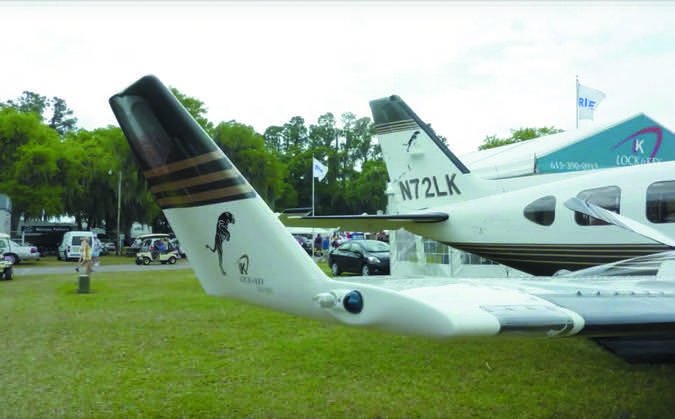
The T-1020 (model designation PA-31-350-T-1020) was an attempt by Piper to gain a larger foothold in the airline market. Called by some a stripped Chieftain, the powerplants were the same. It featured beefier components where experience showed weaknesses, especially elements affected by high cycles, such as doors, landing gear and gear doors. The interiors are also more durable. Up to 11 seats could be installed. Introduced in 1982, a total of 21 T-1020s were manufactured, making it a rare airplane; we found no cost data on it.
Navajo C/R
The PA-31-325 was introduced in 1975 as yet another iteration of the shortbody fuselage. “C/R” means counter-rotating, reflecting the counter-rotating L/TIO-540-F2BD engines rated at 325 HP each that Piper selected for this model. Like the Chieftain, the C/R has extended nacelles with baggage lockers that can be used for additional baggage space or optional auxiliary fuel tanks.
Empty weight averages 90 pounds more than the basic PA-31. Cruise speeds are marginally higher, but range is marginally lower. Single-engine performance is improved although it’s not noticeable when flown by the average pilot. According to the book, the basic Navajo has better takeoff and landing performance than the C/R.
The supposed advantage of the counter-rotating props is more handling ease in the event of an engine failure because—the promotional literature claimed—the dreaded “critical engine” is eliminated. In our view, this isn’t much of a selling point. In the last year that both the PA-31 and PA-31-325 were offered (1982), the biggest factor was that the latter was about $20,000 more expensive than the straight Navajo. The difference hasn’t changed much over the years: The C/R is still worth more than the straight turbo PA-31, by about $15,000.
Mojave
The last Navajo wasn’t even called one. The PA-31P-350 was dubbed Mojave. It was a hybrid that reflected lessons learned over the life cycle of the extended Navajo family with a touch of Aerostar influence thrown in. The Mojave has a lot of appealing features, including a dual-bus electrical system, an O-540 variant engine supposedly designed specifically for high-altitude operation that included intercooling and pressurized mags from the factory, and thicker fuselage skins.
The L/TIO-540-V2AD engines are also counter-rotating, rated at 350 HP at 2575 RPM and have a recommended TBO of 2000 hours. Overhaul cost is around $50,000. Structurally, the wing is based on the Chieftain’s. Span is four feet wider to improve climb and high-altitude cruise performance. The Mojave, the last twin Piper built in Lock Haven, Pennsylvania, didn’t last a year. Introduced in 1983, the 50th and last rolled out the door in June 1984.
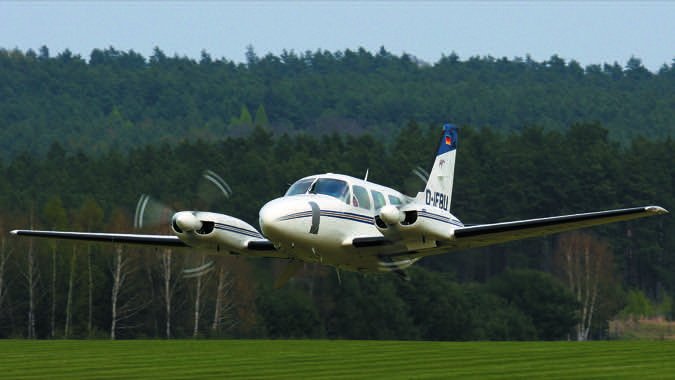
Navajo Nightmares: Maintenance
As we completed our review of the 100 most recent accidents involving the Piper Navajo series, we found ourselves feeling sorry for the airplanes. Navajos are workhorses—by design—and many, if not most, were snatched up by Part 135 operators and have been capably carrying people and things all over the world for generations. In return they have been abused in all ways imaginable.
They have been the victims of awful maintenance. We found maintenance malpractice-induced fires and explosions in flight as we’ll as engines, fuel and gear systems that were either not assembled correctly or run until they came apart.
Pilots added their own insults to maintenance injury when they demonstrated that they couldn’t continue flight after shutting an engine down, often because they failed to feather the prop. They also regularly ran their airplanes out of fuel or decided to select tanks that contained air rather than others that held avgas.
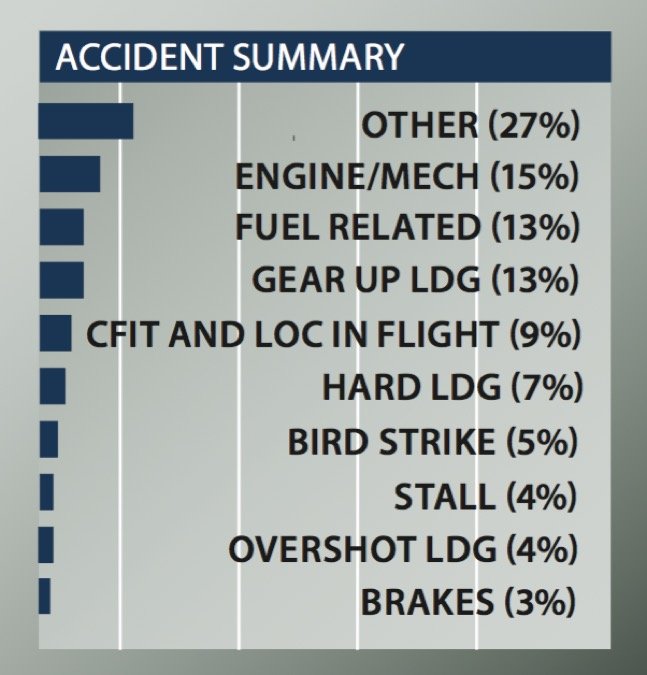
Of those who managed to get to their destination more or less in one piece, 13 pilots decided to land without extending the landing gear—although we were impressed by the determination of the one who went around after he heard the prop tips and flaps hit the runway—he was able to extend the gear and land a second time, more quietly.
Of the pilots who did extend the gear, seven hit the ground so hard they caused structural damage to the airplane. One pilot thought he’d just blown the main tires, so he replaced them and kept flying. A few days later another pilot found missing rivets on preflight and called for further investigation—which uncovered extensive structural damage.
The fuel system on twin Cessnas often comes under attack for its complexity—yet the Navajo rate of accidents due to fuel mismanagement was 50 percent higher than that we observed last month for the Cessna 340. Of further concern to us for the Navajo was the rate at which pilots did not take appropriate action to keep the airplane in the air after shutting down an engine or following just a partial power loss in one engine.
We were also surprised at the unusually high number of gear-up landings—13. However, we only saw two events in which the pilot could not extend the gear due to a malfunction—a very good rate for piston twins.
There were nine accidents involving controlled flight into terrain (CFIT) or loss of control in instrument conditions. We were impressed by the chutzpah of the pilot who kept descending on a localizer approach in fog until he hit trees 600 feet below the MDA. He successfully went around. After diverting and landing, he claimed he’d hit birds. The evidence contradicted him.
There were five bird strike events, including one in which a pilot was confronted with a flock of geese shortly after liftoff. He dove in an attempt to avoid them and hit the ground. After landing not only was structural damage noted from the ground impact, goose remains were found.
One pilot aborted a takeoff when one engine’s manifold pressure wouldn’t come up to match the other. During heavy braking a wing “blew up.” He got everyone out of the airplane safely.
Performance
The non-pressurized Navajo family is surprisingly close in book performance. All have a maximum operating altitude of 24,000 feet. (Forget service and absolute ceilings. This is the limitation that controls operation of the airplane). Speed and range at 65 percent below and at oxygen altitudes are within six knots and 150 nautical miles of each other. Multi- and single-engine rates of climb are so close (100 and 25 FPM at the extreme, respectively) as to be insignificant. So are stall speeds (from 70 to 74 KIAS) and all-engine landing and takeoff field requirements at gross.
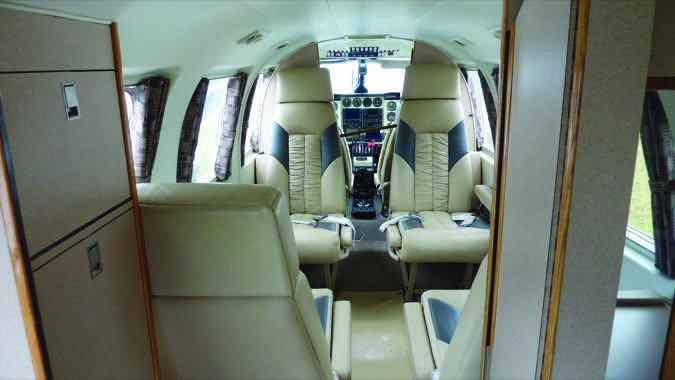
The tricky part in performance is payload with full fuel. A corporate-configured Navajo can be carrying between 500 and 600 pounds of amenities, particularly if known icing and air conditioning options are included. A bare-bones airline Chieftain, on the other hand, might have 250 pounds or less added to the basic empty weight. So, payload with full fuel can range from a low of less than 800 pounds in a well-equipped C/R to more than 1400 pounds in a Chieftain.
Poorly trained, careless or out-of-currency pilots have found the Navajo, like all light and medium piston twins, to be a wolf in sheep’s clothing. It will bite the unprepared. But when all motors and systems are functioning, the Navajo series ranks up there with the absolute best-mannered Pipers ever in terms of handling.
Cabin Comfort
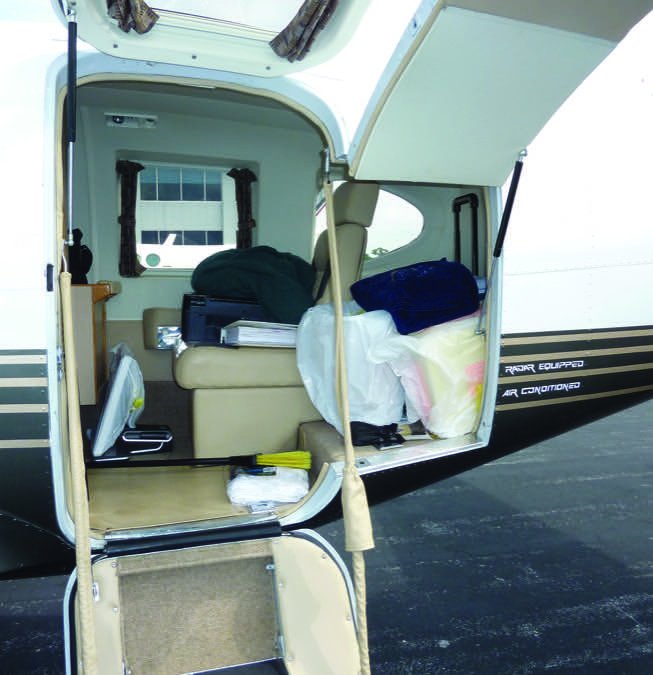
Except for the tallest of pilots, the cockpit is comfortable. The Chieftain is the best of the breed in this respect, because it affords more legroom than comparably equipped and outfitted short Navajos. Visibility is quite good as conventional twins go. Even in the earliest versions, cockpit layout is good.
Passenger acceptance of the Navajo is excellent, according to owners and operators. Entry is eased with the airstair door and in the main cabin, all passengers are treated equally because of the uniform fuselage section and similar seats. The large windows add to a spacious impression.
All things considered, the Navajo offers a good environment for both pilots and passengers. Later models configured for corporate use are downright luxurious. In fact, the least comfortable seat in the house is the one near the main door, due to air noise and drafts.
Support, Maintenance
The Navajo benefits from a fairly large population and a powerplant that continues in production, also in large numbers, thus representing a profitable support business. It is about as far from being an orphan as any out-of-production general aviation airplane could be. And with Piper back on its feet, support is no problem, although some owners complain about slow response from New Piper.
One owner supplied a list of favored suppliers and mentioned he had compiled a list of 60 maintenance and operational points that took some work to identify and to solve. Another mentioned “an aggressive preventive maintenance program which involves magneto and alternator overhauls every 500 hours, replacement of the Airborne 400 series pneumatic pumps every 600 hours, fuel injector flow testing and cleaning every 100 hours, engine mount replacement every 400 hours, landing gear lubrication every 50 hours…”
Operating care is critical to engine and other system life. Temperature control, from start to shutdown, is an important element in care of the engines. Pre-heat, proper warmup and avoiding rapid throttle movement are simple yet critical factors in engine life. There have been a high number of cylinder problems, especially with the 350-HP engines used in the Chieftain (and the Colemill Panther conversions). Many of these have been attributed to operational causes, such as shock cooling in descent, abuse during training and generally poor technique in day-to-day operation.
In 1982, Lycoming issued a letter covering operational techniques aimed at improving service life. While it focuses on the Chieftain, the information is largely applicable to any turbocharged powerplant. Much of it concerns temperature management, but there are other useful recommendations, such as avoiding partial-throttle takeoffs to ensure proper fuel cooling and to avoid detonation. There also are additional maintenance and inspection tips in Lycoming’s bulletin.
As GA airplanes go, the earlier Navajos are getting old. The usual effects of age are complicated by the fact that the FAA in 2002 added the Navajo series to its Aging Airplane Safety Rule, by dint of the model’s use in airline service. The long-term impact of this rule is unknown but would-be buyers should know it could lead to expensive, required maintenance of various kinds.
Navajos have a large number of ADs associated with them, including more than their share of repetitive inspection requirements. Make sure that any airplane being considered for purchase is in compliance.
The design-specific (as opposed to accessory) ADs run from flight controls and flight control surfaces to structure and from landing gear to operational and handbook changes. Operational changes included limiting normal and maximum operating speeds at altitude and changes to Vmc for both the PA-31 and C/R.
One of the more notorious ADs limited use of the flaps to avoid strain and the potential for asymmetric flap deployment. It negatively affected the takeoff and landing performance of the airplane. This was addressed by factory and aftermarket changes to the flap transmission and other system improvements.
There are relatively few mods available for the Navajo. The best-known PA-31 mods originally came from Colemill Enterprises of Nashville, with its line of Panther conversions. These typically consist of a new or overhauled pair of TIO-540 engines, new four-blade Q-tip props and winglets. Colemill was taken over by Murfreesboro, Tennessee-based Mike Jones Aircraft Sales, which does the mods and offers the Lock and Key Navajo complete refurbishment program.
For a standard price of $895,000, you get a Navajo that’s in like-new condition, including a $45,000 new interior and a $45,000 paint job, factory remanufactured engines with new dual-drive magnetos (or the choice of factory new engines for an additional cost), plus new four-blade Q-tip propellers. All accessories including turbochargers, wastegates and engine mounts are new, while redesigned engine cowlings allow for closing the cowl flaps during climb and picking up 15 knots in climb speed.
The advertised $105,000 radio package lists the discontinued Garmin GNS530 and Sandel EFIS as standard. We contacted the company several times to learn more about the current offering of avionics and other accessories on the current Lock and Key package, but it never responded with an explanation.
American Aviation of Spokane, Washington (800-432-0476) makes intercoolers, which should help out with engine problems by reducing thermal stress. Nayak Aviation Corp. (210-824-7511) sells auxiliary fuel tanks that increase capacity by a total of 52 or 54 gallons, depending on model.
Owner Feedback
I purchased a Navajo Chieftain with a partner with the intention of putting the aircraft on a 135 charter certificate, plus we planned to fly it for business and family travel. While this seemed like a good concept (we hoped the charter revenue would help cover our own operational costs), it didn’t work quite as we expected.
Since the aircraft was once on a charter certificate, it was well-maintained, but still needed a sizable investment to bring it up to 135 standards and that of the Beech Baron 58 we owned for years. Our first project was an avionics upgrade, including ADS-B to meet the 2020 mandate. It had older BendixKing Silver Crown avionics, including a KFC200 autopilot that needed a lot of work to perform the way we expected it to. Two servo replacements, an attitude gyro replacement and nearly $8000 later, we had an autopilot that worked, but not great. When installing a Garmin GTN750, the shop found that the static system had numerous leaks requiring sizable troubleshooting and teardown to fix. But the real shocker was a failed weather radar that required a $10,000 repair. We opted to install Garmin’s digital radar and ditch the traditional display in favor of the GTN750 as the primary display. But when the shop finished the installation, they determined the radome needed to be replaced. It was one thing after another.
We decided to fly the airplane for a few months to see how it performed before diving into the costly Part 135 certification process. Along the way we dealt with an air conditioning failure, a failed starter on the left engine, a gyro failure in the KCS55A HSI system, a broken cabin door that left my partner stuck inside when he was on a trip, plus a variety of other maintenance items that had us wondering why we ever sold our bulletproof Baron.
On the plus side, we enjoyed the large cabin and the aircraft’s performance, although it wasn’t quite as fast as our Baron. We ultimately sold the Navajo without putting it on a charter certificate because frankly, it was just too complex for our wallets. We ended up with another Baron and barely broke even after selling the Navajo, given the money we invested in one year of ownership. Luckily, the engines had low times since factory overhaul, which made the aircraft as attractive to the new buyer as it was for us. My advice to anyone considering a Navajo is to bring it to someone who knows these airplanes inside out for a prepurchase evaluation. It’s just too complex to take a gamble.
Fred Massico
via email
I am the owner of Superior Airways, an air taxi charter business in Sioux Lookout, Ontario. We operate two Piper Chieftains and prior to Superior, I flew a Chieftain for several operators throughout northern Canada for over 1000 hours.
The aircraft can be reliable in the hands of a knowledgeable maintenance shop. There is much you can do to avoid common problems, but this entails spending money on overhauling components prior to their actual failure. The strongest point of a PA-31 is that they rarely, if ever, leave you completely stranded without many signs of impending problems. Understand, you may be temporarily restricted to daylight VFR ops to ferry the thing home, but it almost always starts and gets back.
The first issue I’ve had to deal with is the gear. Micro switches and both engine-driven hydraulic pumps must be replaced at their first signs of weakness. Raising the gear and waiting a longer than normal time for the gear lights to extinguish is your first clue. Intermittent gear horn warning beeps on the ground are another sign that a switch is starting to go. The power pack is also prone to failure after a certain amount of time.
The Lycoming IO-540s are strong, solid engines. Oil leaks are one persistent headache but are normally minor glitches. I’ve flown these engines throughout the high Arctic at -40 degrees C and have never experienced a cylinder cracking. It’s just important to keep high power on descent and to reduce power no more than 1-inch MP per minute in descent, while trying to keep them as warm as possible. It’s also important in the cold temperatures to run the right oil and block off part of the oil cooler to keep the temps up. Pre-heating is essential before starting for long service life.
Performance-wise, it is surprising how much TAS is related to takeoff weight. We run with the VG kit for a max takeoff weight of 7368 pounds. We see about 185 knots at 5500 pounds takeoff and 170 knots at gross. Fuel consumption runs at factory minimums of 30 GPH per side in the climb (giving about 1200 FPM at 130 knots) and can be reduced to 16 GPH a side in cruise. Oil consumption is minimal. Range with 182 gallons is about 800 NM with our second aircraft with the Nayak fuel tank option adding about another 200 NM.
The strengths of the aircraft are in the wide availability of aftermarket support and PMA spare parts available (usually). There are many operators with this type and therefore there is no shortage of experienced operators. With the right training and currency, they are easy airplanes to fly and will climb better than other light twins on one engine. The passengers also like them because of the bright, large windows, decent cabin size and fairly quiet ride. We operate both aircraft with noise canceling headsets for the passengers to ensure the quietest ride possible.
It’s a shame that Piper decided to abandon this line of aircraft size, as they do 90 percent of what a Beech King Air 90 will do, for far less money. It’s certainly easy to fly and will haul a large family fairly quickly along with a load of gear into fairly short, unimproved strips.
The downside is expect to pay about every bit of $400 per hour for direct operating costs and reserves, along with up-front fixed costs such as insurance, training, charts, etc.
Mike Misurka
via email

